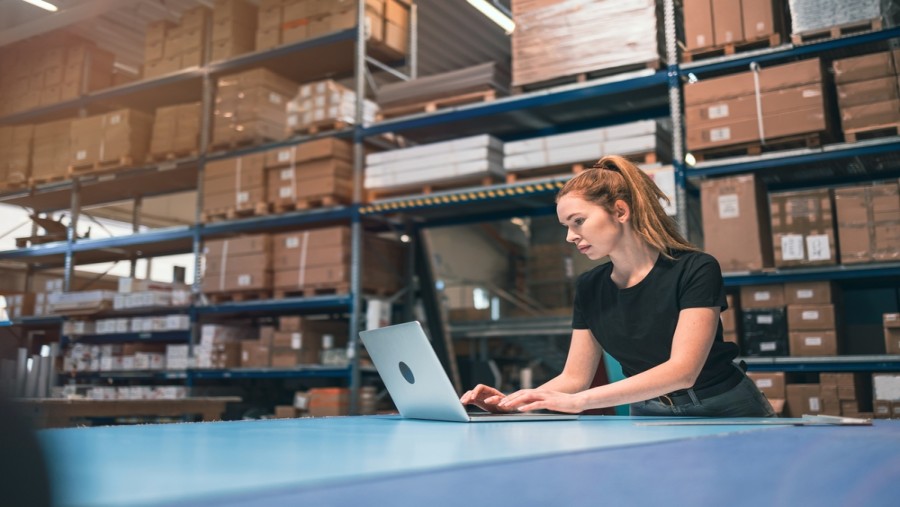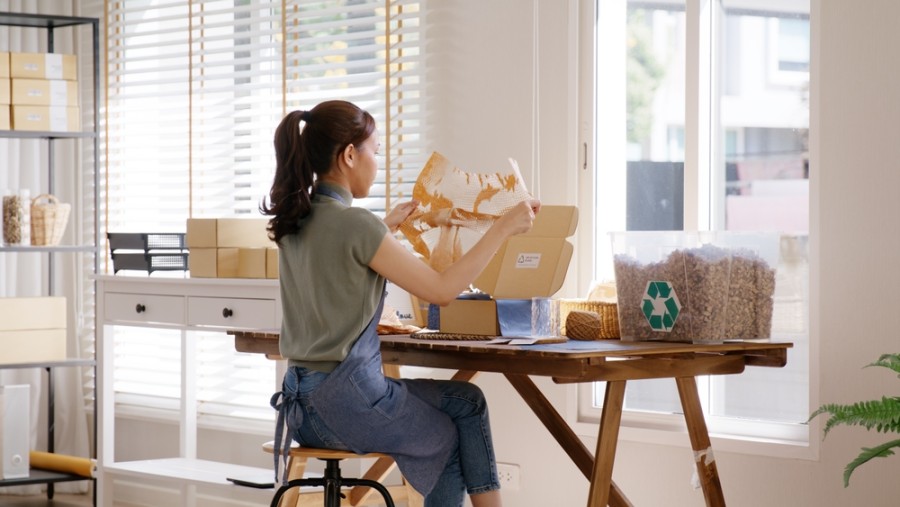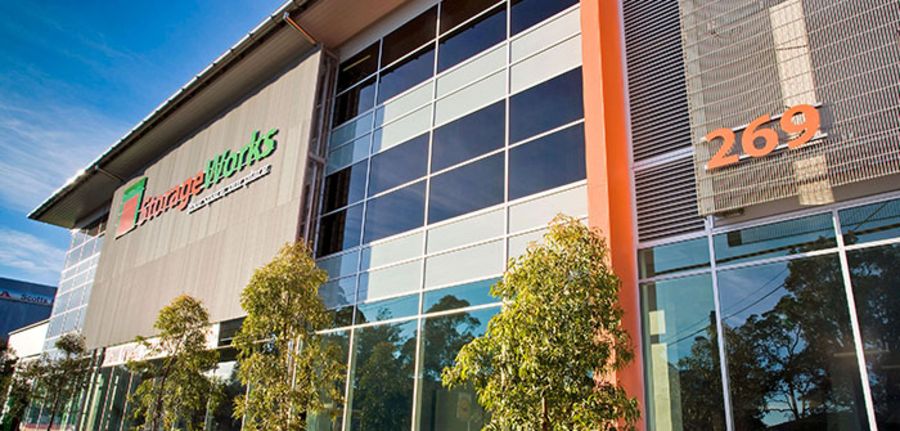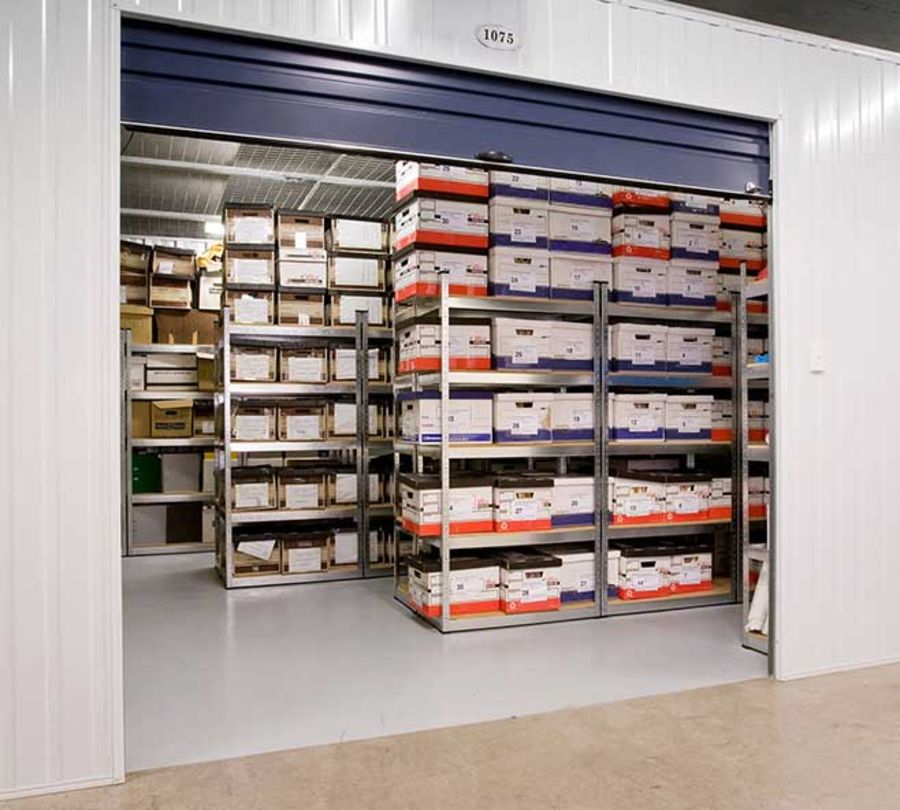
Have you ever wrapped something in the wrong packaging, only to find out it’s been damaged during transit? This is the last thing you want to be dealing with, especially if you own a business or intend to move interstate.
According to the Australian government, in 2020-21, 6.74 million tonnes of packaging (POM) was placed on the market, and 86% of packaging POM had good recyclability. What does this mean? Packaging is a big part of modern society, reducing food waste, protecting products during transport, and making sure they’re secure. All in all, it’s a big decision to make for your business storage.
This blog will be your ultimate guide to the right packaging supplies for your products. Selecting the appropriate packaging materials involves assessing product protection needs, transportation requirements, cost-effectiveness, and customer preferences.
Types of Packaging Materials

When a product is brought to the market, packaging is one of the most important parts of the process.
Whether you’re a startup planning a launch or want to rebrand, what are some of the different packaging materials available, and how do you get it right?
Paper
As one of the most popular packaging materials, paper is eco-friendly, flexible and easily customised for brands. Paper packaging can include SBS (solid bleached sulphate) paperboard, kraft paper, or rigid boxes.
- SBS paperboard, for example, is made from paper pulp and is stronger than ordinary paper but thinner than cardboard. Package medicine, cosmetics, or frozen foods!
- Kraft paper, on the other hand, is made using the sulphate pulping process and is more sustainable. Although it’s durable, it’s less resistant to moisture compared to SBS paperboard.
Cardboard Packaging
Moulded to any shape or size, lightweight, recyclable, and able to be strengthened to carry heavier items, cardboard is commonly used for e-commerce shipments, retail packaging, and food packaging.
Identical to corrugated boxes, cardboard packaging is made of multi-layered paper that is structurally stable. It consists of three layers: the inner layer, the corrugated layer, and the outer layer. The corrugated–or fluted medium–works as a rigid insulator.
More companies are switching to recyclable cardboard packaging to minimise environmental impact. For example, major retailers like Amazon have committed to using eco-friendly cardboard materials.
Plastic Packaging
Airtight, lightweight, flexible, and cheaply mass-produced, plastic is commonly used for food packaging, pharmaceuticals, and consumer goods. Soft plastics can be used to make plastic bags, bottles, bubble wrap, and durable plastics to package liquids such as juice. However, plastic packaging is facing increasing scrutiny as it’s not good for the environment. Rigid plastics are also harder to recycle than softer plastics.
Many businesses are now moving to circular packaging, including recycled packaging from plastics previously used as byproducts.
In Australia, the Department of Climate Change, Energy, the Environment, and Water has set ambitious National Packaging Targets so that 100% of plastic packaging is reusable, recyclable, or compostable by 2025. Businesses must consider the sustainability of their plastic packaging choices.
Recycled Plastic
Instead of joining a pile of plastic waste that pollutes oceans, recycled plastic is less harmful to the environment.
Custom poly mailers and recycled mailers, for example, are made using recycled plastics in circulation and come with a second adhesive strip, so they’re reusable. Some poly mailers can be customised on both sides with your brand logo designs!
Bioplastics
Made from plant-based materials such as sugarcane and beets, bioplastics are an alternative to polyethylene-based packaging and traditional plastics. The best part? They break down naturally (unlike plastics).
Businesses are adopting materials such as plant-based plastics, compostable paper, and moulded fibre packaging to reduce their carbon footprint.
Cotton
A natural fibre, cotton has a soft texture and is always customisable. It is used to package jewellery, watches, shoes, and premium items.
For example, tote bags can be used for packaging branded merchandise, whereas drawstring bags can store delicate cosmetics or jewellery.
Assessing Product Protection Needs

So, how do you go about planning your package design? There are important things to think about!
Your Budget Limitations
What is the scope of your budget? This helps you think about the type of materials you can use and what you can spend. After all, you want your packaging to look beautiful for customers.
For example, materials such as natural fibres and glass look great to consumers, but they are expensive to ship or manufacture. Glass is breakable and heavy, which can cause storage and shipping concerns.
Budget-friendly options include food-grade cardboard, which offer crush protection and unique design options. On the other hand, plastic is not environmentally friendly, but it can be made from recycled materials.
It’s important to find a balance between creativity and materials that will make your project successful.
Transport Requirements
After choosing a package design, how do you want it to function? You could have amazing packaging, but if it can’t be moved from store to store and doesn’t work for consumers, it won’t do your business any favours.
For example, a design that can’t be transported from your warehouse to the shelves without being damaged is pointless. Bulky, delicate, or unusual shapes need the right materials for strength. Keep in mind that products with a long shelf life need special considerations or a UV-treated high-gloss, a liquid-based coating.
It’s always cheaper in the long haul to pay for a protective package design instead of replacing damaged goods later! To meet your production budget, find a middle ground between the cost of product damage and the cost of packaging.
Sustainable Material Choices
The materials you decide will impact how long your packaging will last. You don’t want your products to be wrapped in material that is too big or small.
For example, some flexible films are lightweight, offer great printing results, and reduce the cost of freight and shipping for businesses when compared to heavier options. Flexible films work well with dairy, food, cosmetics, pharmaceuticals, hardware items and retail products to protect and extend shelf life.
- Carded material options are flexible and ideal for fragile items, produce, and items that need to be seen to support a sale.
- Blister packs are used for types of pre-formed plastics used to package products such as consumer goods, pharmaceuticals, and consumer goods.
- Clamshells are made from two identical shells connected on one side, with the other side having small hinges that allow it to lock shut.
- Skin packs are containers that place the product on a piece of skin board, which is also called a backer. A slim sheet of surly or skin poly covers the product before the backing is applied.
Size of Product
Do you have a product that comes in different sizes? You might be able to cut back on your spending by creating different packages instead of individual sizes. This way, you’re being more economical about dimensions and design.
Creativity will ensure the integrity of the products you ship, and you’ll save time, money, and show consistency throughout your product range.
Design and Branding
With every great product comes its overall package design, and it’s a good idea to keep your audience in mind when making these decisions.
The type of material you choose for your packaging design is part of your brand, so a disconnection between your materials and brand messaging can confuse consumers.
For example, you don’t want to promote environmentally friendly packaging and yet choose plastic; it contradicts your brand values. In any case, listen to your target audience.
Complying with Industry Packaging Standards
Australian businesses must comply with various industry standards and regulations governing packaging materials and safety. All suppliers must comply with the Australian Competition and Consumer Commission’s (ACCC) mandatory standard for ingredient labelling of cosmetics, for example.
The Australian Packaging Covenant Organisation (APCO) has set guidelines for sustainable packaging, with a goal for all packaging to be recyclable, reusable, or compostable by 2025.
Compliance with these standards helps improve their credibility and customer trust.
Packaging Supplies for North Sydney Businesses: How Storage Works Can Help

We believe that your space is our place, so we offer premium storage units in Artarmon for your business storage needs, whichever packaging you decide on.
Whether you’re in need of a large space to store stock, supplies and equipment or a smaller, secure place for important documents and legal records, Storage Works Self Storage has your best interests in mind. What exactly do we offer?
- Over 50 types of storage space sizes and shapes
- The right space at just the right price
- Long-term or short-term storage
- Clean, state-of-the-art facilities
- Concierge services
- Storer-only areas
- Extended storage hours
- 24/7 CCTV monitoring and recording
- Individually alarmed units
- PIN-controlled security gates
- After-hours back-to-back monitoring
- On-site deliveries accepted and dispatched
- Meeting room with WiFi
Whether you’re looking for business storage near Chatswood, Northwood, Lane Cove, Cremorne, North Sydney, Longueville, or Sydney CBD, Storage Works wants you to spend more time exploring what life has to offer.
Need Business Storage in Sydney? Call Storage Works!
Do you need a place to store your inventory? Get your stuff into business storage at Storage Works, and let us look after it for you. Whatever life has in store for you, we’re here to help you make room for it.
Contact us today at 02 9901 3200 or email artarmon@storageworks.com.au to learn more about our prices and special offers, boxes & packaging, and how you can make an online payment. A member of the Self Storage Association of Australasia, Storage Works is located on the Pacific Highway, Artarmon in Sydney (near North Sydney), so we’re easy to find and access!
We have mini-warehouses and large business spaces available. Shipping containers can be received, and forklifts and pallet jacks are available onsite. We also offer concierge services for receipt and dispatch of shipments, Parcelpoint, and a Tesla charging point.
